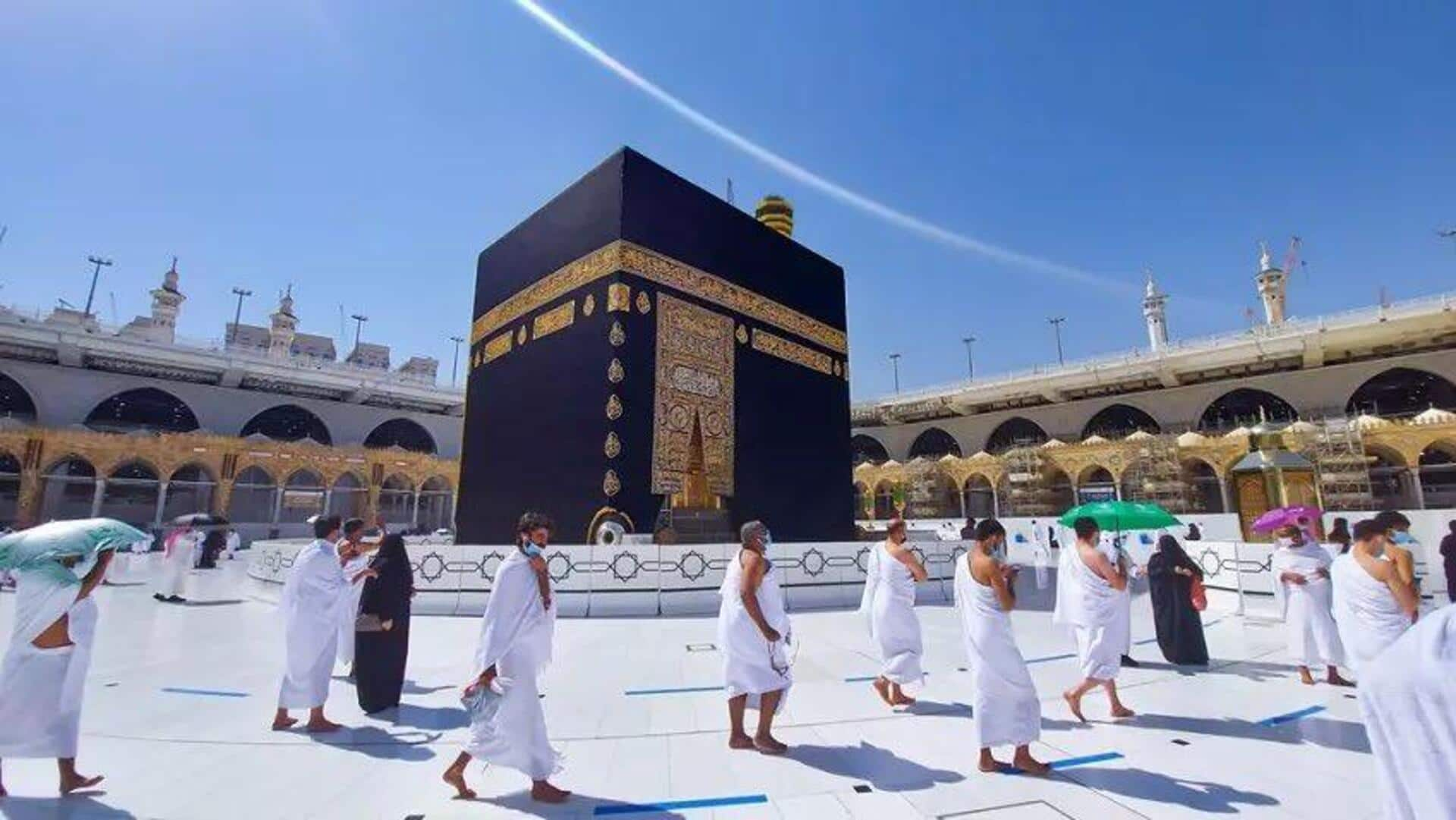
What's the difference between Hajj and Umrah dress codes
What's the story
Millions of Muslims undertake the holy pilgrimages of Hajj and Umrah to Saudi Arabia every year.
An important component of the journey is entering into a sacred state called Ihram.
Contrary to the general assumption, Ihram isn't merely about donning certain clothes; it is a state of total purity in body and mind, necessary for all pilgrims who are preparing spiritually for their holy journey ahead.
Men's dress code
Ihram attire for men during Hajj
When performing Hajj, Muslim men wear an outfit known as Ihram, which is made up of two plain white cloths.
One is wrapped around the waist (izar), and the other is draped over the shoulder (rida).
The attire symbolizes purity, humility, and equality before God.
Men are required to wear open sandals that expose their ankles and the top of their feet.
They must not wear underwear or socks or stitched clothes and keep their heads uncovered.
Women's dress code
Ihram attire for women during Hajj
Women's Ihram for Hajj doesn't require any particular garment.
Any modest, loose-fitting clothes covering the full body except the face and hands are fine.
Long dresses, tunics with pants, or abayas are acceptable as modesty is prioritized over style.
Women are required to wear shoes covering their entire foot and should carry scarves/shawls to cover their heads and shoulders.
Pilgrimage distinction
Understanding the difference between Hajj and Umrah
Umrah is an important Islamic pilgrimage to the holy city of Makkah.
Pilgrims visit the Kaaba and perform sacred rituals in an act of worship.
Unlike Hajj, which is one of Islam's five pillars and performed at a specific time ending with Eid-ul-Adha, Umrah can be performed year-round.
Umrah clothing is identical to Hajj, with pilgrims donning Ihram. However, Umrah is a shorter and simpler pilgrimage than Hajj.
Yet, modesty and cleanliness requirements must be respected during this pilgrimage.